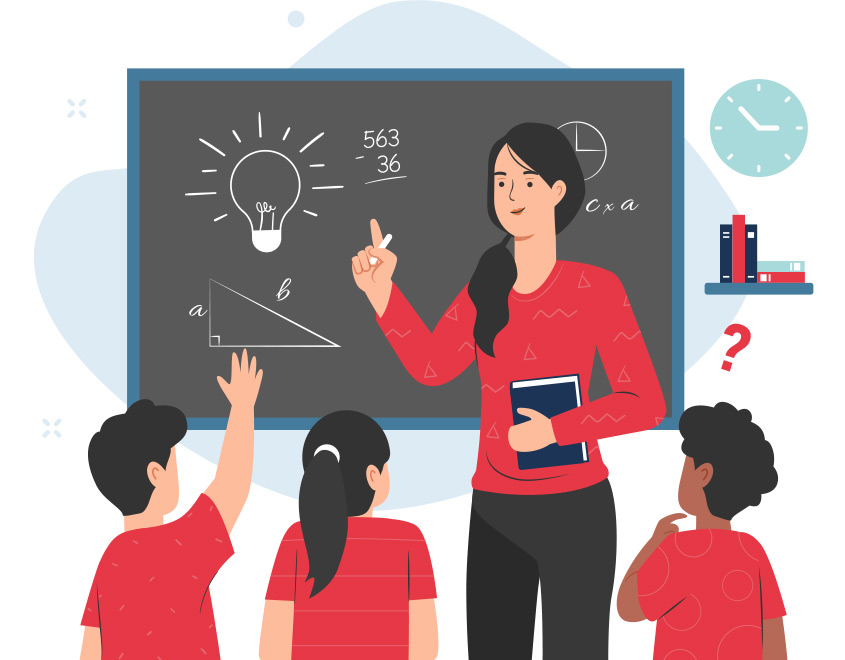Find the Best Primary Science Tuition Singapore for Enhanced Learning
Wiki Article
A Comprehensive Overview to the Various Discovering Approaches in Main Science Guideline
The expedition of diverse discovering methods in primary scientific research direction provides a possibility for educators to enhance pupil involvement and understanding substantially. By examining hands-on knowing methods, inquiry-based approaches, and joint strategies, we can identify efficient techniques that satisfy different learning designs. In addition, the combination of innovation and differentiated guideline plays an essential function in promoting a comprehensive environment. Nevertheless, the inquiry continues to be: how can these approaches be successfully executed in the classroom to maximize their impact? The solution depends on a better examination of each technique and its effects for teaching scientific research.
Hands-On Understanding Strategies
Hands-on knowing techniques play a crucial function in key science instruction, involving trainees in energetic expedition and trial and error. These techniques permit students to engage directly with sensations and materials, cultivating a deeper understanding of clinical principles. By utilizing manipulatives, designs, and real-life experiments, teachers produce a setting where pupils can observe, assume, and test their concepts.Such methods not only boost comprehension but also grow critical thinking and analytic abilities. When students join activities like constructing basic machines, growing seeds, or carrying out chemical reactions, they are urged to ask inquiries and seek responses through their own monitorings. This experiential method helps to debunk complex clinical principles, making them more easily accessible and relatable.
In addition, hands-on understanding promotes partnership amongst peers, as trainees often function in teams to conduct experiments or share findings. This synergy not just improves their learning experience however additionally establishes essential social abilities. Ultimately, integrating hands-on methods in primary science instruction cultivates a long-lasting love of learning and curiosity regarding the environment, laying a strong structure for future academic searches in scientific research and beyond.
Inquiry-Based Knowing
Inquiry-based understanding is a training technique that urges students to ask questions, examine sensations, and construct their very own understanding of scientific concepts. This approach changes the emphasis from typical teacher-led guideline to a much more student-centered experience, where learners take the initiative in their instructional journey. By cultivating inquisitiveness, inquiry-based discovering promotes much deeper engagement with the product, permitting trainees to check out topics in a meaningful context.In technique, this method usually includes hands-on experiments, monitorings, and important reasoning tasks that align closely with the scientific method. Trainees are encouraged to develop hypotheses, style examinations, and evaluate information, which grows crucial skills such as analytical and analytical thinking. The function of the instructor in this framework is to facilitate exploration, assisting pupils with the questions procedure while encouraging independent thought and collaboration.
Additionally, inquiry-based understanding supports a sense of ownership over the knowing procedure, inspiring students to pursue understanding proactively. This technique not only boosts understanding of clinical principles however additionally fosters a lifelong love for discovering, gearing up students with the skills necessary to browse an increasingly complicated globe.
Collaborative Discovering Approaches
Collaborative discovering methods equip students to participate in purposeful communications with peers, promoting a shared responsibility for their educational outcomes. In key scientific research instruction, these approaches urge learners to collaborate to discover scientific concepts, address problems, and conduct experiments (primary science tuition Singapore). By taking part in team activities, trainees can leverage diverse perspectives, allowing for richer understanding and retention of scientific expertise
One trick facet of collective learning is the focus on interaction abilities. Students must express their ideas, pay attention proactively to others, and negotiate ideas, every one of which are critical competencies in both academic and real-world contexts. This social interaction not only enhances their understanding of scientific concepts however also promotes teamwork and problem resolution skills.
Moreover, collaborative understanding often brings about increased inspiration and engagement. When students see the value of their payments within a group, they are most likely to take possession of their discovering trip. Educators can promote this process deliberately structured team jobs that line up with educational program goals while providing assistance on efficient partnership methods. Generally, including collaborative learning approaches in key science direction cultivates a vibrant knowing environment that prepares pupils for future scholastic and social difficulties.
Technology Assimilation in Scientific Research
The assimilation of innovation in key science guideline boosts learning experiences by giving innovative tools and sources that sustain numerous mentor approaches, consisting of joint discovering - primary science tuition Singapore. Making use of electronic platforms, simulations, and interactive applications allows trainees to involve deeply with clinical ideas, helping with an extra hands-on approach to understandingDigital research laboratories, for example, enable students to conduct experiments securely and successfully, advertising inquiry-based learning. These devices can imitate real-world clinical situations, enabling trainees to envision intricate processes that would certainly be tough to reproduce in a traditional classroom setup. Innovation cultivates communication and collaboration amongst students, as they can share searchings for and work together on jobs via on-line systems.
Furthermore, multimedia presentations and educational video clips can enrich lessons by accommodating varied understanding designs, making abstract principles more available. Data evaluation devices additionally empower students to gather and interpret clinical information, reinforcing essential assuming skills. Generally, the tactical unification of modern technology in main science guideline not only boosts engagement yet likewise prepares trainees for a highly innovative culture, outfitting them with essential skills for future scientific ventures.
Distinguished Guideline Strategies
Separated direction techniques are necessary for page resolving the varied demands of students in primary science education. These strategies make it possible for educators to customize their training approaches to fit differing capacities, interests, and learning styles within the classroom. By using distinguished guideline, educators can produce an inclusive setting that promotes engagement and boosts understanding of scientific concepts.One reliable method is to make use of adaptable grouping, which allows trainees to team up with peers at similar ability degrees or with varying point of views. This strategy motivates peer knowing and promotes important thinking. In addition, supplying options in tasks can equip pupils, allowing them to select projects that resonate with their rate of interests while still fulfilling curricular objectives.
Additionally, integrating tiered jobs is one more valuable strategy. Deliberately tasks with varying degrees of complexity, instructors can guarantee that all students are properly tested, despite their efficiency. Using formative assessments to gauge understanding further makes it possible for teachers to readjust their educational approaches dynamically, ensuring that each learner receives the assistance they need.
Eventually, carrying out differentiated instruction approaches in key science education see not only boosts pupil discovering results yet likewise grows a passion for science, preparing students for future academic searches.

Conclusion
In summary, efficient primary scientific research guideline necessitates a diverse method that encompasses hands-on discovering, inquiry-based techniques, and joint strategies. The combination of innovation and differentiated direction even more accommodates diverse discovering styles, promoting a setting conducive to expedition and vital thinking. By implementing these approaches, educators can improve student interaction and comprehension, eventually supporting a long-lasting passion for science and inquiry. Such thorough techniques are essential for establishing informed and interested future researchers.The exploration of varied learning techniques in main scientific research instruction presents a possibility for instructors to improve trainee involvement and comprehension considerably.Hands-on learning techniques play a crucial function in primary scientific research instruction, involving trainees in energetic expedition and experimentation.Inquiry-based discovering is an instructional method that encourages trainees to ask inquiries, investigate phenomena, and build their very own understanding of clinical ideas.Collective understanding approaches equip trainees to involve in meaningful interactions with peers, promoting a common duty for their academic outcomes. Generally, integrating collective knowing techniques in key scientific research guideline grows a dynamic look at this site understanding environment that prepares pupils for future academic and social obstacles.
Report this wiki page